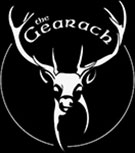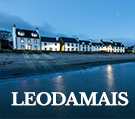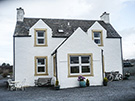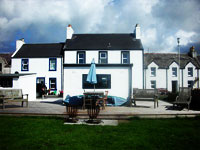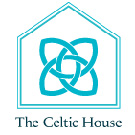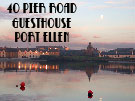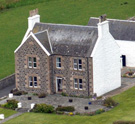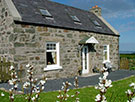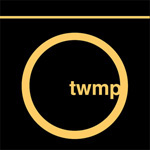Excerpts from issue 53/05 13 December 2025

When the boat comes in
In the September update from Caledonian Maritime Assets Ltd (CMAL) concerning delivery of the MV Isle of Islay it was advised that the completion checks, as required by the Marine Coastguard Agency (MCA), would be carried out in October. Cemre shipyard actioned all the items raised by the MCA, with the latter returning to the shipyard this past week for final surveys and crew drills, whereby CMAL hoped to receive the final sign off.
The shipyard has actioned all remaining inspection remarks, completed the painting and cleaning of the vessel and has provided all necessary documentation for vessel handover, final details that are often quite time-consuming.
Assuming all has proceeded smoothly, the shipyard is targeting handover of the vessel to CalMac prior to the Christmas period. It has been acknowledged that doing so will be a challenge, but CMAL, CalMac, Cemre and the regulatory authorities are all working collaboratively towards reaching this target date for vessel delivery just before the Christmas holidays. It should be noted, however, that this target is without guarantee.
One of the challenges around a delivery voyage at this time of year, will be related to the availability of service engineers if they are required to attend the vessel. If the vessel is handed over to CalMac in Turkiye, prior to Christmas, the crew can be arranged accordingly and prepare for and carry out the re-positioning voyage. CMAL, CalMac and Cemre continue to be firmly focussed on attaining handover as soon as possible and thereafter commence the repositioning voyage from the Sea of Marmara back to Scottish Waters. This is expected to take two weeks, including a refuelling stop in Gibraltar prior to undertaking the final leg into the Atlantic and across the Bay of Biscay. Upon arrival there will be a period of familiarisation and testing of the vessel at the ports in which it will operate. There is a risk regarding the weather, once out into the Atlantic beyond the Straits of Gibraltar, but this will be closely analysed at the time.
Assuming all the above takes place in a timeous manner, it is likely that the vessel will join the Islay/Jura route at the end of January/beginning of February 2026.
Photo: Jim Anderson CMAL
...........................................................................................................................................................................................................
Extremely Un-get-atable

Awarded the prestigious title of Photographer of the Year at the SONY World Photography Awards in 2021 and recognised the following year with an Honorary Fellowship of the Royal Photographic Society, Craig Easton has completed work on and published 'An Extremely Un-get-atable Place', a book of images relating to Barnhill on Jura, renowned as the house in which George Orwell wrote '1984'.
Known for his intimate portraits and expansive landscapes, Easton also shoots long-term documentary projects exploring issues around social policy, identity, culture and community. According to 'Jura Jottings', he was part of the team that visited Jura in 2024, inspiring locals to take out their cameras for the 'Show us Jura' project.
In 'An Extremely Un-get-atable Place', he re-imagines the time that George Orwell lived at Barnhill at the north end of Jura, through a series of highly atmospheric monochrome images taken with a 1952 vintage, large-format, wooden, plate-camera.
The hand-crafted darkroom prints are toned with strong tea with respect to Orwell's recognised obsession. His essay, 'A Nice Cup of Tea' is also reproduced in full.
The images are joined by outtakes from the diaries and letters Orwell wrote at Barnhill and include a reproduction of the first eight pages of his handwritten manuscript for '1984'. Worth the price of admission alone.
The book's cover features an extract from a 1948 letter sent by Orwell to his publisher, in which he says, "I am not pleased with the book, but I am not absolutely dissatisfied. [...] I think it's a good idea, but the execution would have been better if I had not written it under the influence of TB."
The imagery is, by turn, dramatic and yet peaceful; the large format allows for mood, atmosphere and depth, going a long way to impress upon the reader, the conditions under which Orwell wrote possibly his most famous book.
Copies can be purchased direct from the photographer at a cost of £50.
www.craigeaston.com
...........................................................................................................................................................................................................
In this week's issue:
Bowmore Hall Update, Islay Ales finally opens, Shared headship of schools rises again, Screen machine completes funding campaign, HSCP in Argyll & Bute, New CalMac ferries, The Ileach abroad, Photo book of Barnhill, Island Resilience Fund expanded, Simon Thoumire’s Christmas Waltz, Spirited Soaps at twenty, Islay Badminton, Senior Citizens' Christmas lunch, Schools wind band concert, Charlène Busalli's book column, Kilmeny Wednesday Afternoon Club, The changing face of Christmas, Book review - The Gravity of Feathers - Andrew Fleming
...........................................................................................................................................................................................................
Book review - a history of St. Kilda

The Gravity of Feathers by Andrew Fleming. Birlinn hardback 348pp illus. £25.
Despite the fact that the islands comprising the St. Kilda archipelago were evacuated some 95 years ago in 1930, they have continued to exert a fascination, even upon those who have rarely, if ever, set foot on any of Scotland's islands.
Situated 35 miles west of the Outer Hebridean island of Uist, St. Kilda (a saint who never actually existed) consists of three principal islands: Hirta, Soay, and Boreray, "...a few fragments of the rim of an ancient volcano". The largest of the three, Hirta, being the only one of which was occupied, reputedly since the Neolithic period, over 5,000 years ago.
According to the author, the correct pronunciation of 'Hirta' is 'Heersht', but the definition of the word has ranged from 'isle of herded sheep' (Norse) to 'death' (Gaelic), possibly referring to the difficulties to be encountered by those living there. The occupied village of Hirta formed a semi-circle of stone cottages overlooking a similarly shaped bay on the eastern side of the island. Its population was sadly controlled in number by persistent infantile tetanus, resulting in the premature deaths of many of the children.
The islanders originally survived as cattle and sheep farmers, as well as demonstrating climbing and abseiling skills, catching seabirds and their eggs on the two needle-point islands of Stac an Armin and Stac Li, adjacent to Boreray.
In ensuing years, it became possible to send supplies and mail via the many trawlers which passed the island, though with the advent of radio communications, the trawler owners were better able to pinpoint the location of their vessels and became considerably less tolerant of their captains making what were seen as uncommercial detours.
The author's narrative is not only well-researched and historically and socially precise, but includes the occasional twist of humour (Raiders of the Last Auk). As you'd expect from a small population more or less constrained to one small island, the social interactions often read as possibly the first soap opera, where the incumbent Free Church minister was by turn, adjudicator to, or the cause of many disagreements. As, on occasion, was the nurse.
The author states in the preface, "...one thing which startled me was just how fashionable St. Kilda became ... among mainlanders." Some of the responsibility for that must surely be apportioned to the tweed woven by the islanders utilising wool from the three main breeds of sheep maintained on the islands (Soays, Borerays and St. Kildas).
"In the 1870s, the islanders started to weave tweed for export much more purposefully than they had done before. [...] By 1904, St. Kilda tweed could be bought at Marchall & Snelgrove, the famous Oxford Street store."
Andrew Fleming has compiled a compulsive history of St. Kilda, a volume which will no doubt perpetuate the ideal of living as "the only people in the world who feel the sweetness of true liberty". It is a worthy addition to the St, Kilda bookshelf, commended by having been shortlisted in 2025 for the prestigious Wolfson History Prize.
Way too many histories adhere rigidly to an academic rigour, leaving the author little room to show his/her personality through the narrative. Thankfully, Mr. Fleming has found the cracks within those constraints, delivering an entertaining, and at times, opinionated treatise on probably Scotland's most intriguing island.
bp
'The Gravity of Feathers' is available from the Celtic House, Bowmore
...........................................................................................................................................................................................................
This is Islay
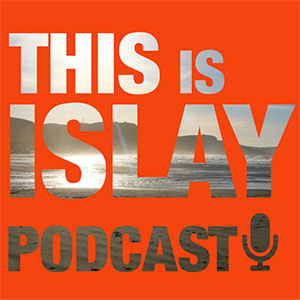
A monthly podcast featuring individuals, personalities and features of Islay and Jura. Listen now at https://anchor.fm/thisisislay
...........................................................................................................................................................................................................
to subscribe or advertise, contact ileach@ileach.co.uk



